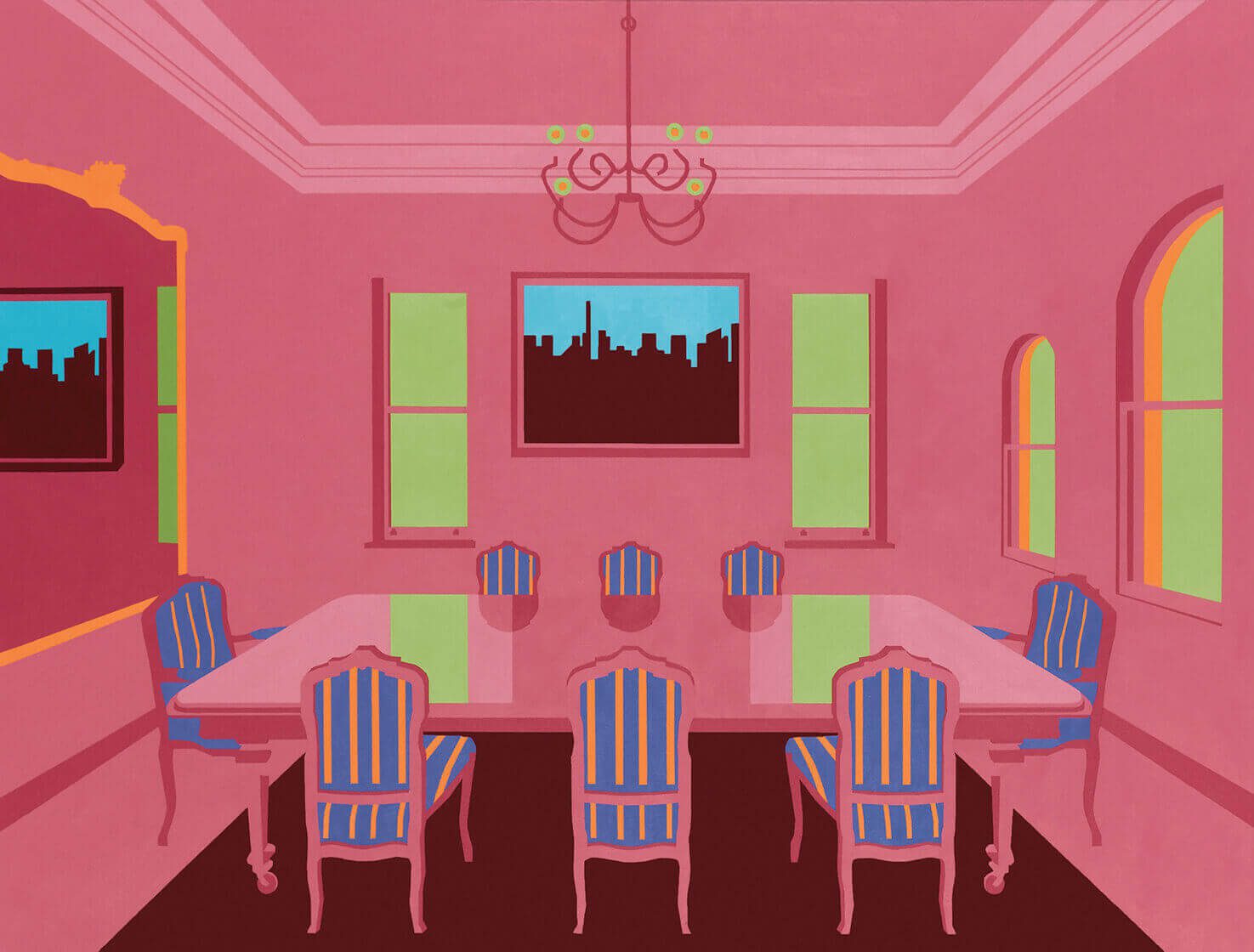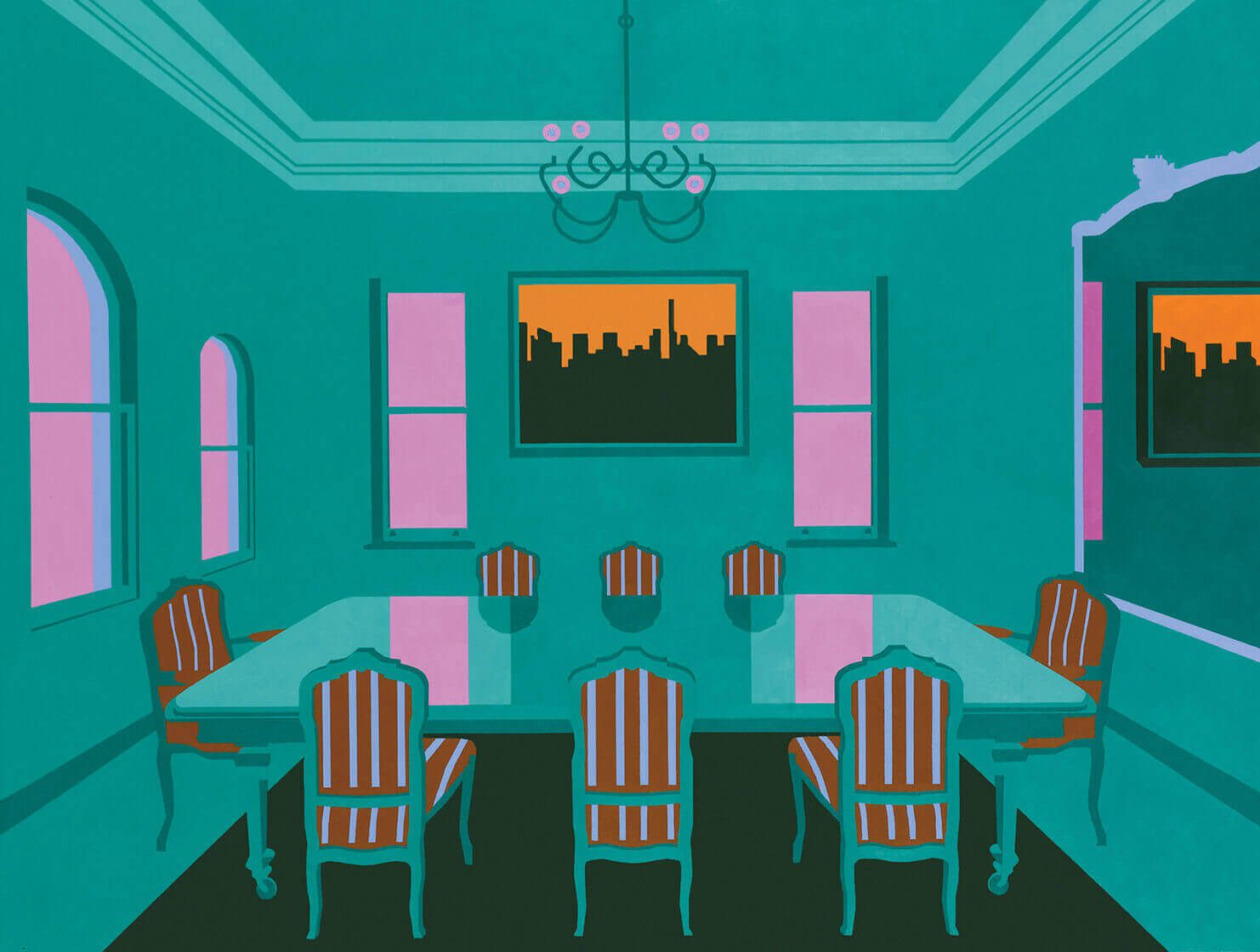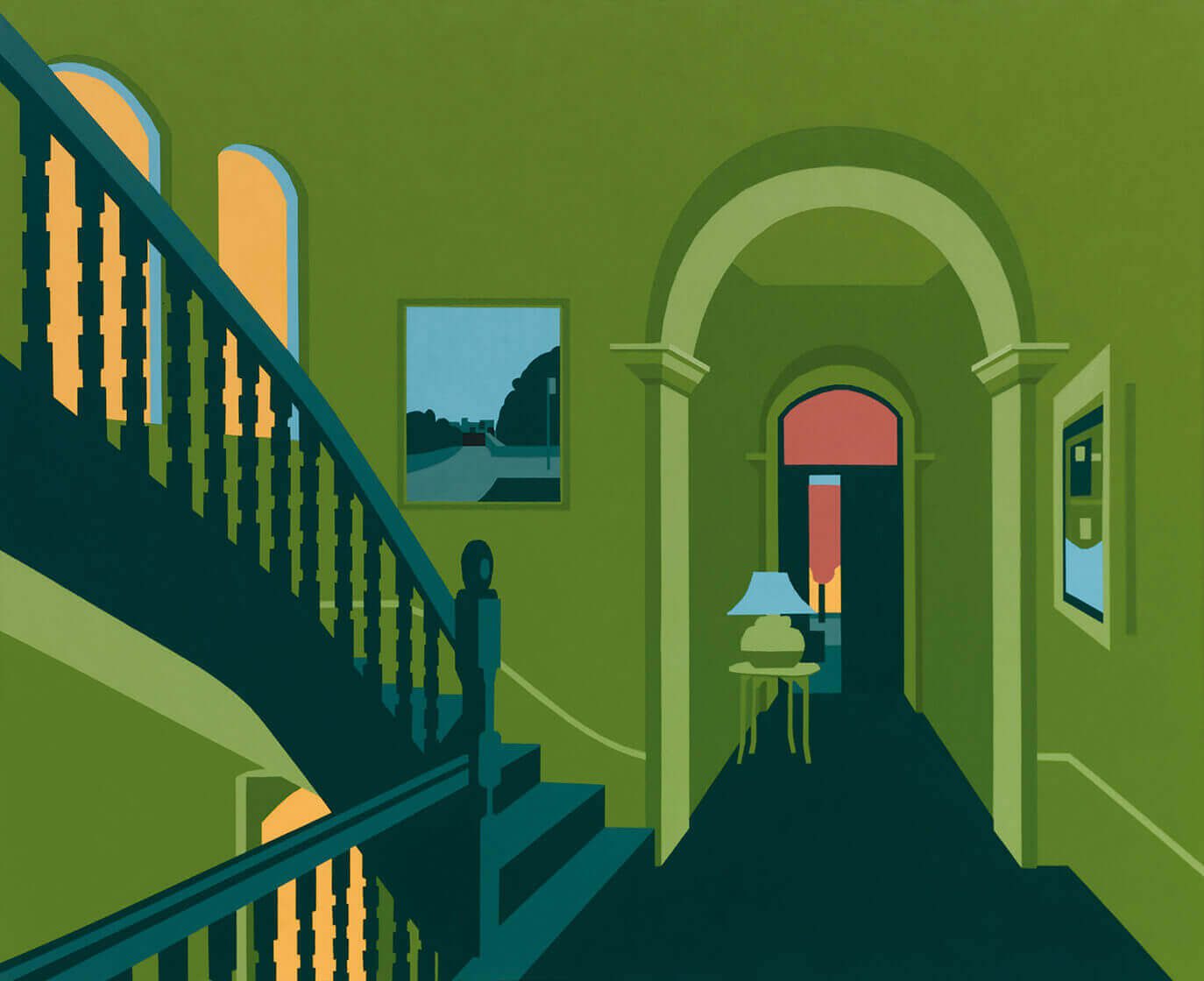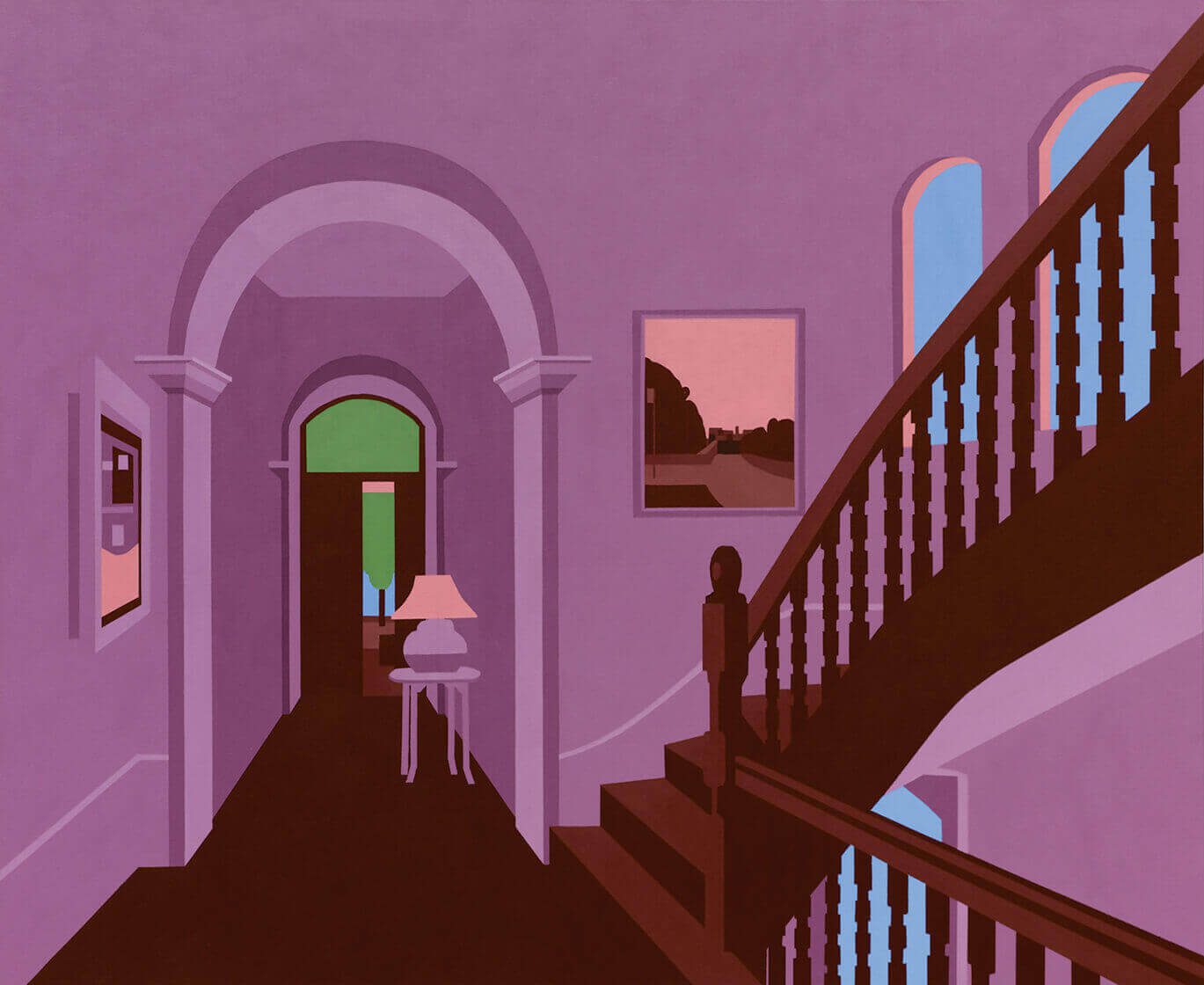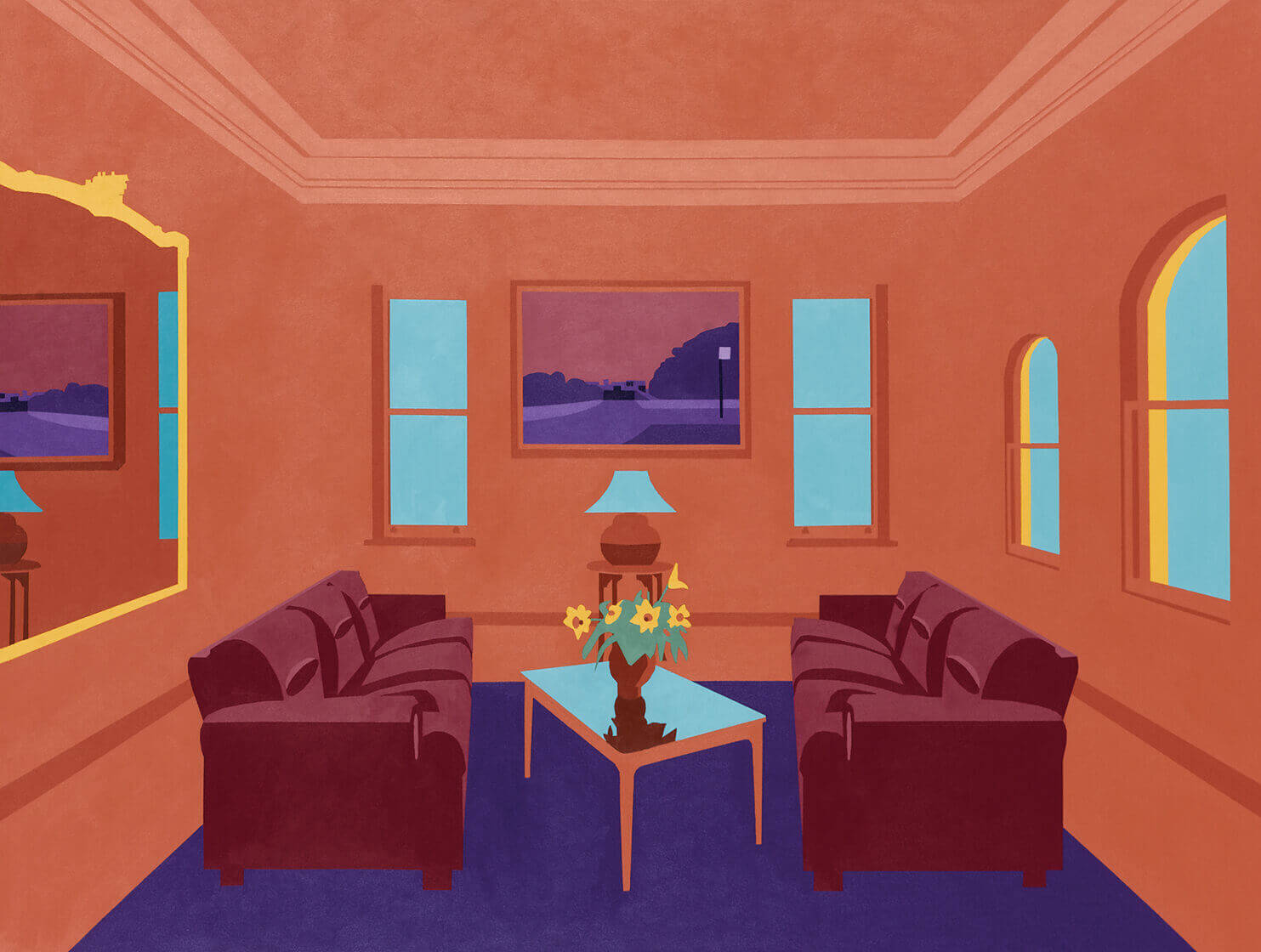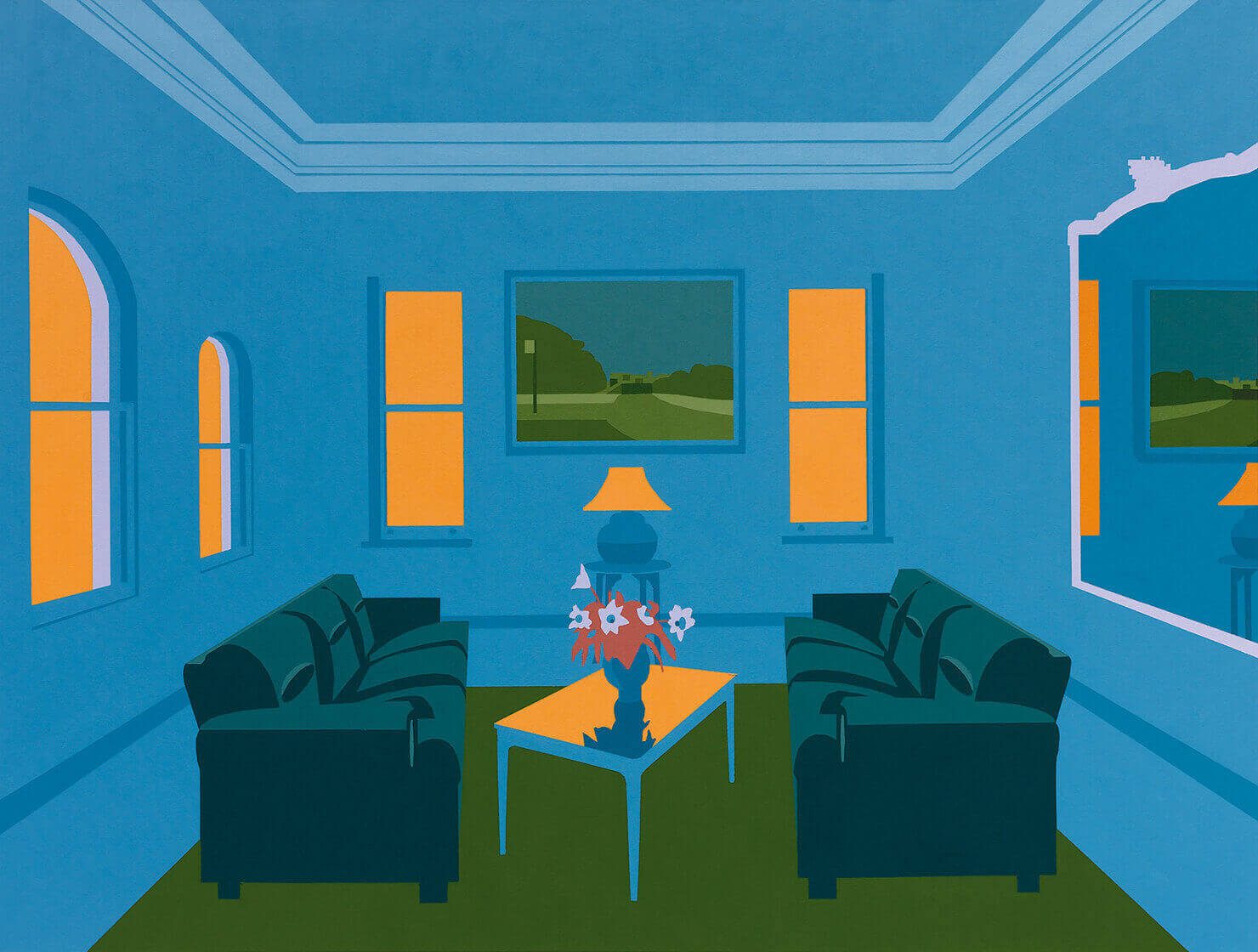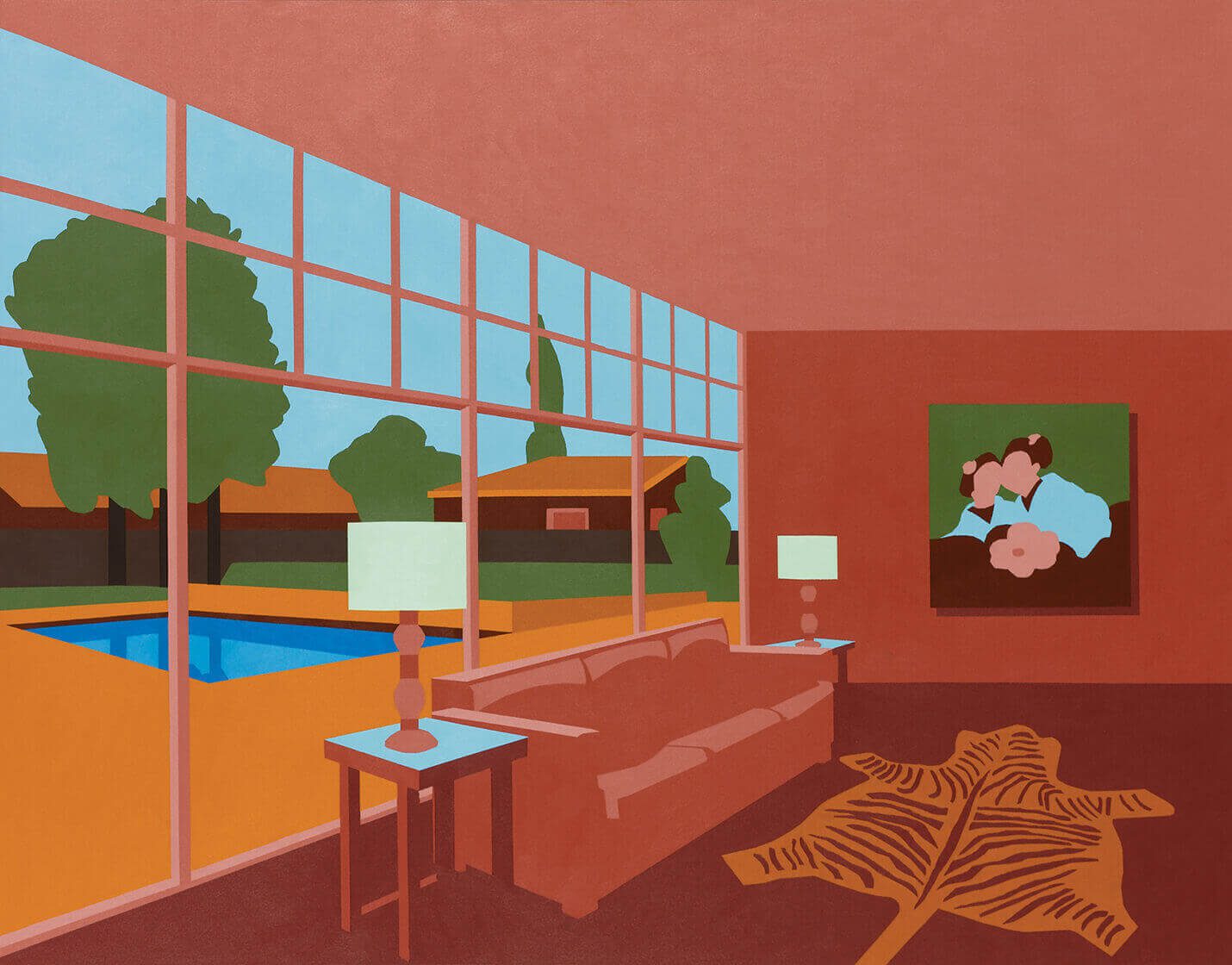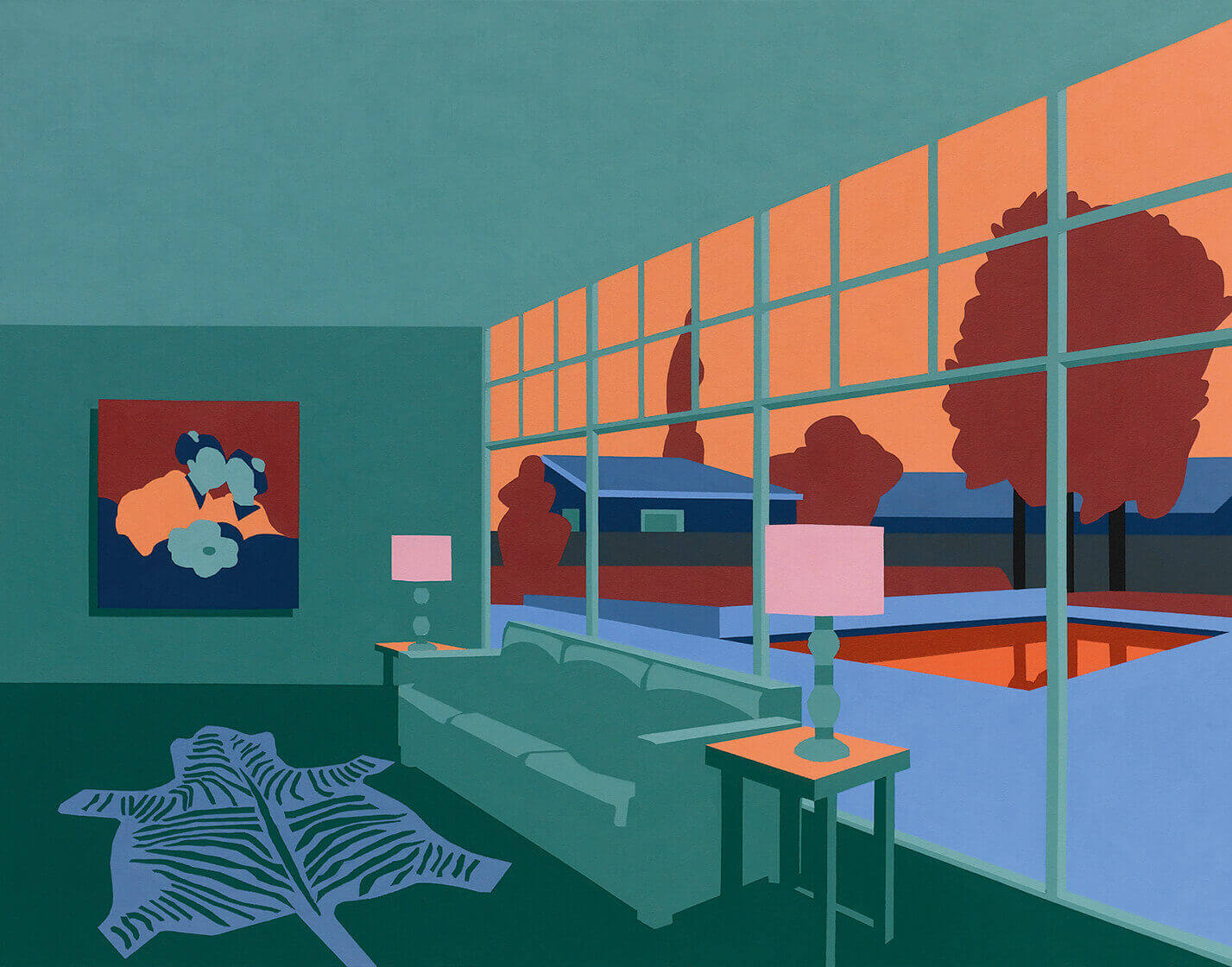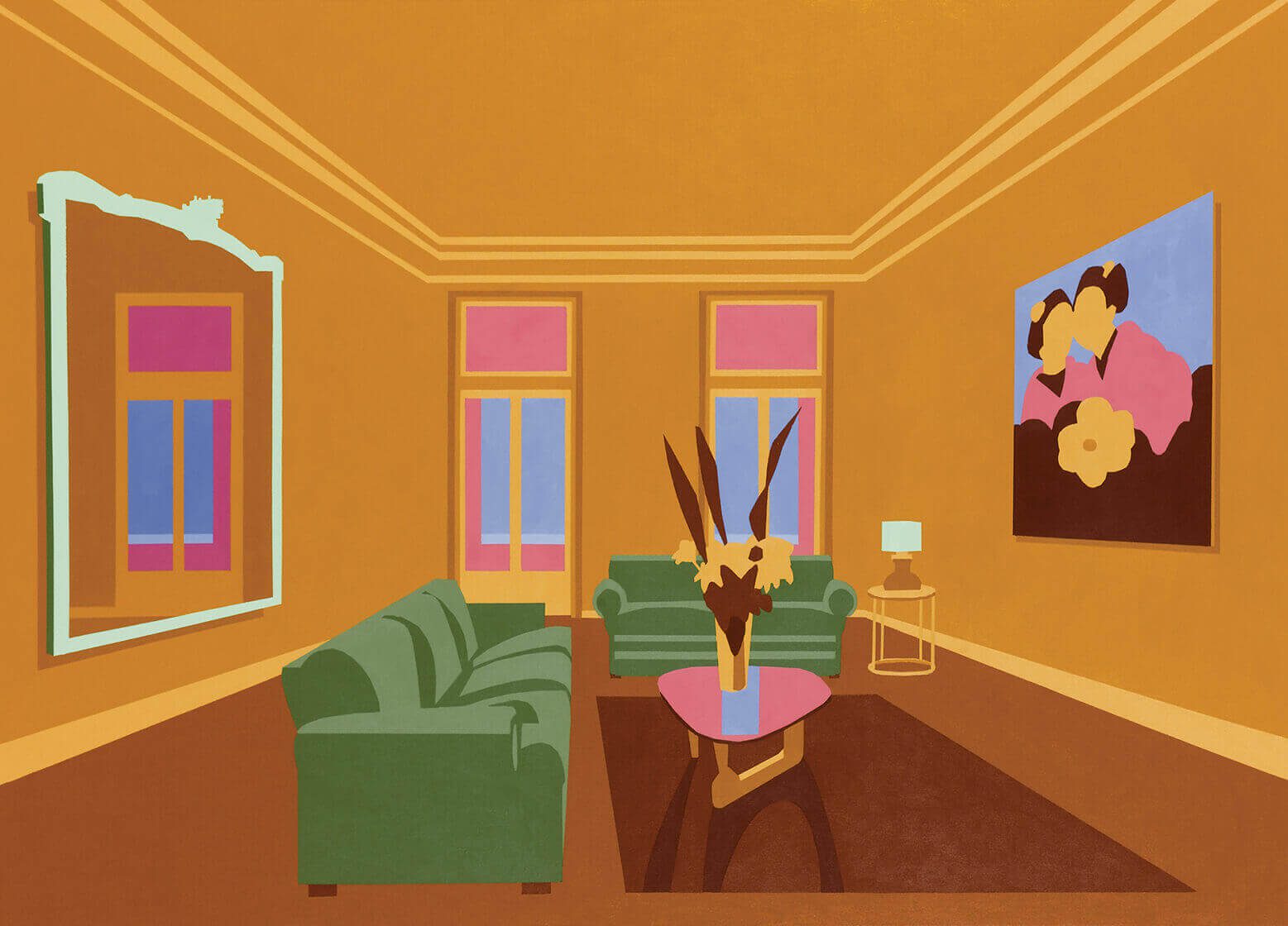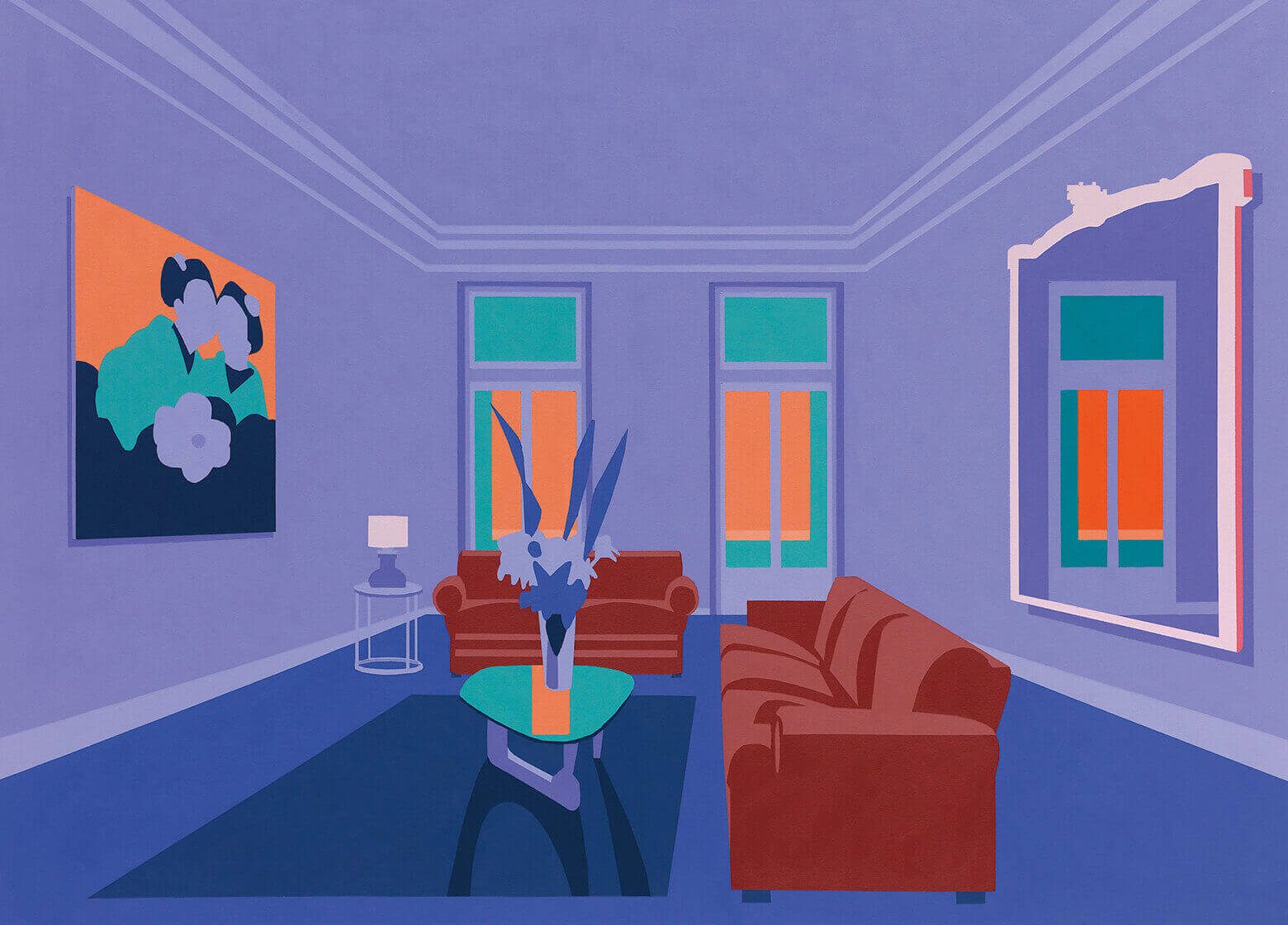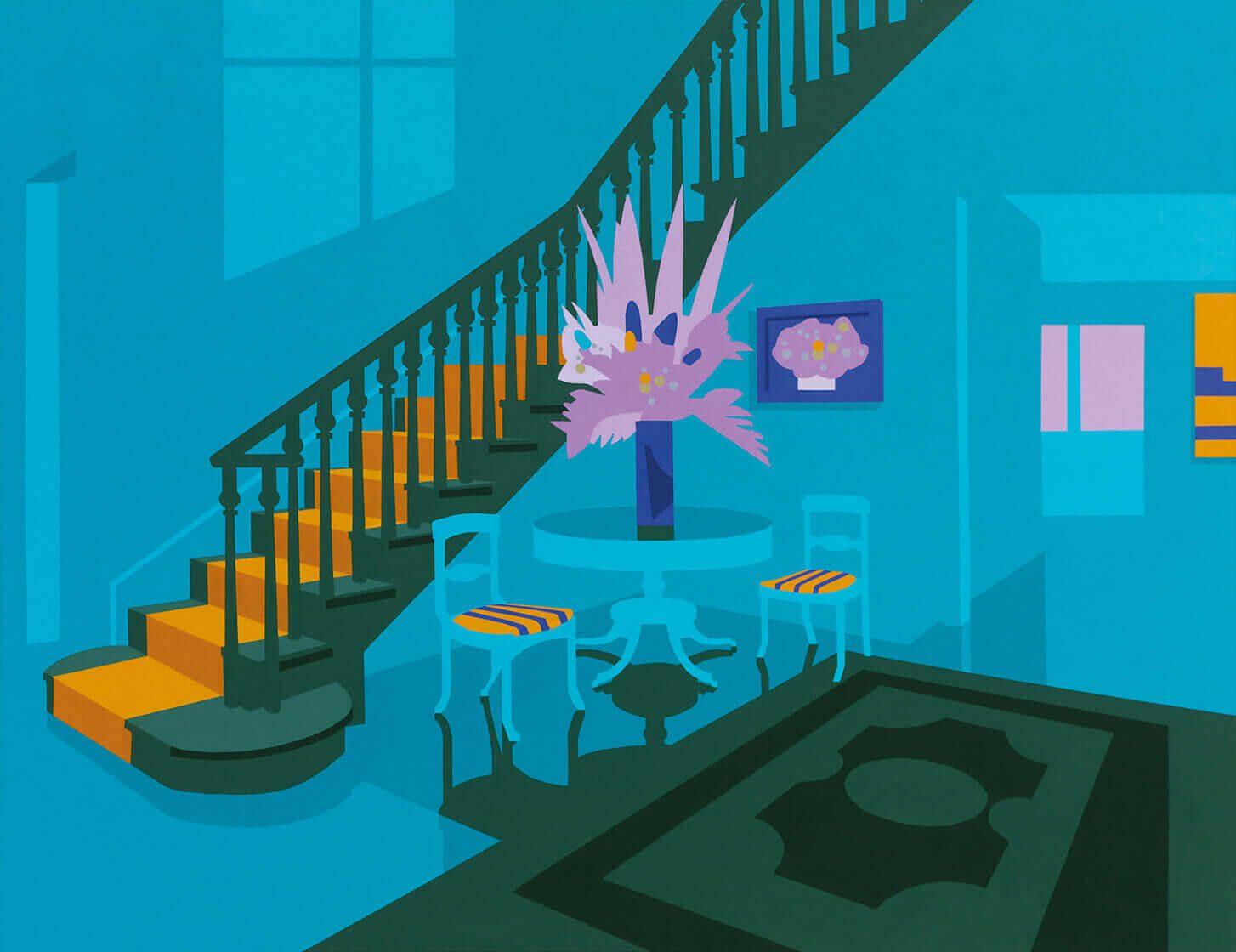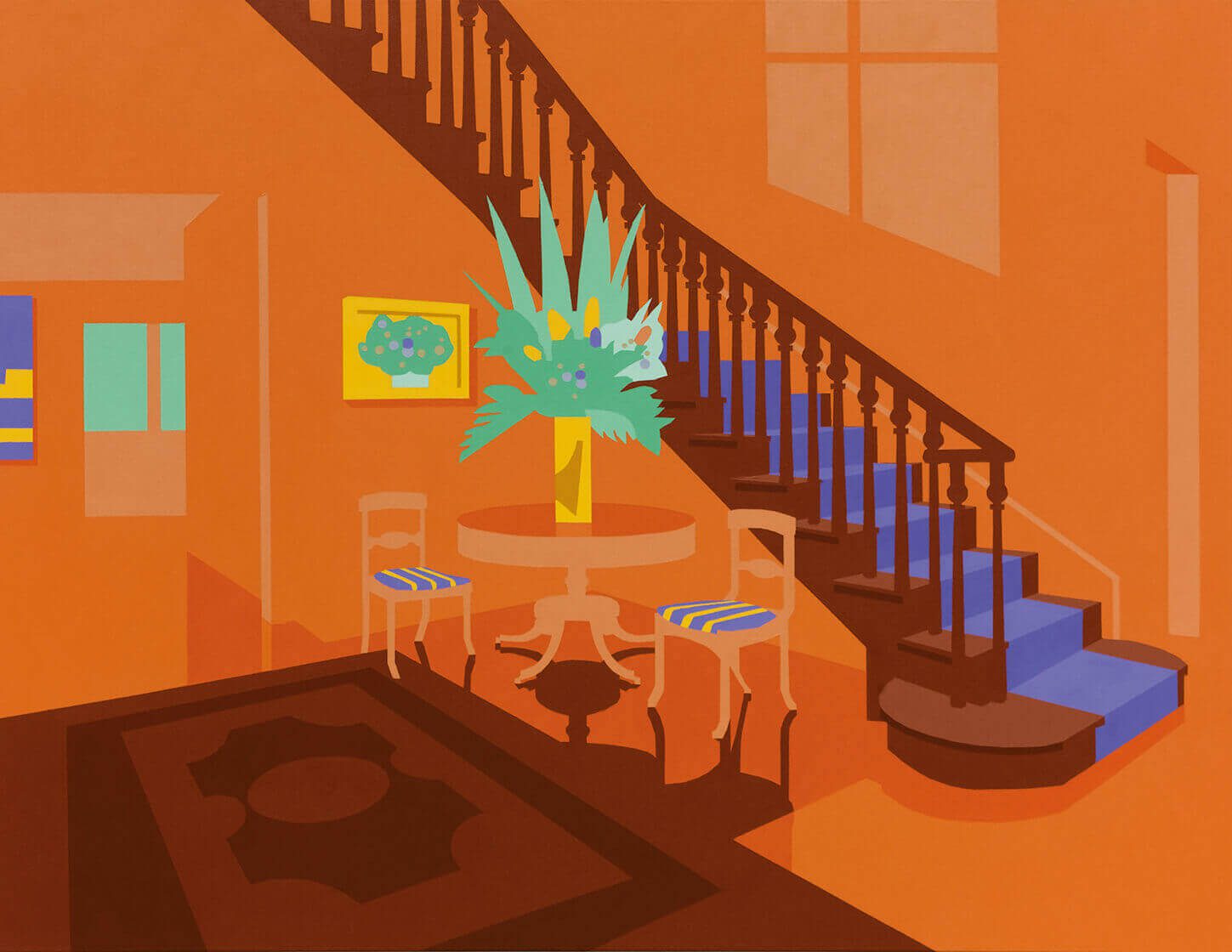Interiors, July–August 2011, Sullivan + Strumpf
Reflection
Lee Kinsella, June 2011
Joanna Lamb’s latest series of paintings acknowledges the pervasive power of graphic design and mechanical forms of image reproduction. Her work alludes to mass-produced imagery, but rather than presenting some aspirational ideal or destination, Lamb offers intriguing and mysterious spaces through which to move. She invites the viewer to inhabit these vacant, hyper-real spaces, and utilise personal narratives to enliven the scenes. Moving from one pair of paintings to the next could well represent a scene-by-scene narrative progression. By providing these pared-back images, Lamb has invested in the potential for accumulated layers of meaning and multiple, contested narratives, rather than pursuing a treatise about the loss of meaning through repetition.
In these paintings Lamb utilises the lexicon of interior design to produce various combinations of furniture and furnishings within defined interior spaces. She intimates three-dimensional forms by using slabs of colour applied in a uniform skin of acrylic paint across the canvas surface. Each image is carefully composed, and the impact of major formal elements within the works, such as the diagonal run of the staircase, is intensified when mirrored across two canvases. It is as if Lamb has decisively located the viewer front and centre, before carefully arranging the scene around them. However, Lamb’s systematic reconfiguration of these interiors renders the images too perfect. Rooms are too symmetrical: furniture, paintings and decorative items are adeptly placed, and each stem of foliage arranged ‘just so’ within the vase. Lamb’s reworking of the images using stylised forms and heightened colour propels her paintings towards the realm of theatrical stage sets. Her slick, shiny imagery conceals the details necessary to enact a drama – a sense of stillness and disquiet pervades. Has the gleaming dining table been wiped clean of all fingerprints? These images lack specificity and encourage disparate readings. At this point the audience is required to shatter the quiet with a multitude of scenarios and possible interpretations.
The viewer becomes enmeshed within strands of narrative through the repetition of imagery. Across the divide, meaning ricochets from surface to reflected surface and beyond… bouncing back at the viewer for further reflection. We are to consider our place in the drama, and how we wish to proceed.
